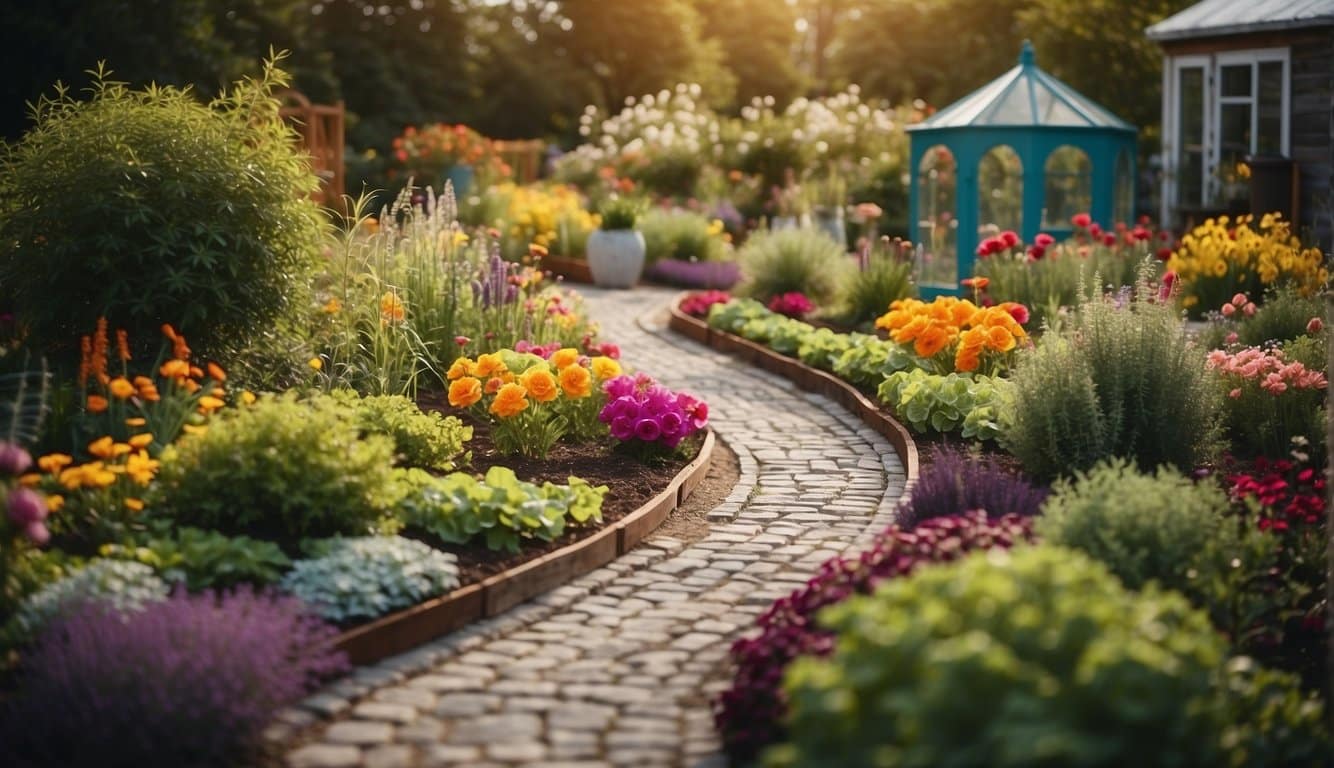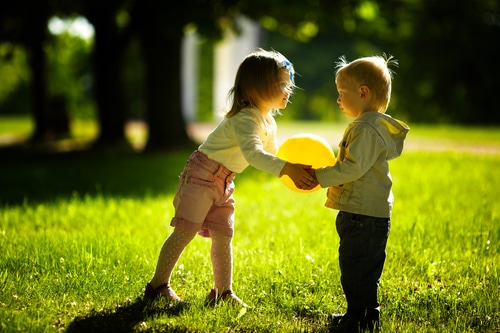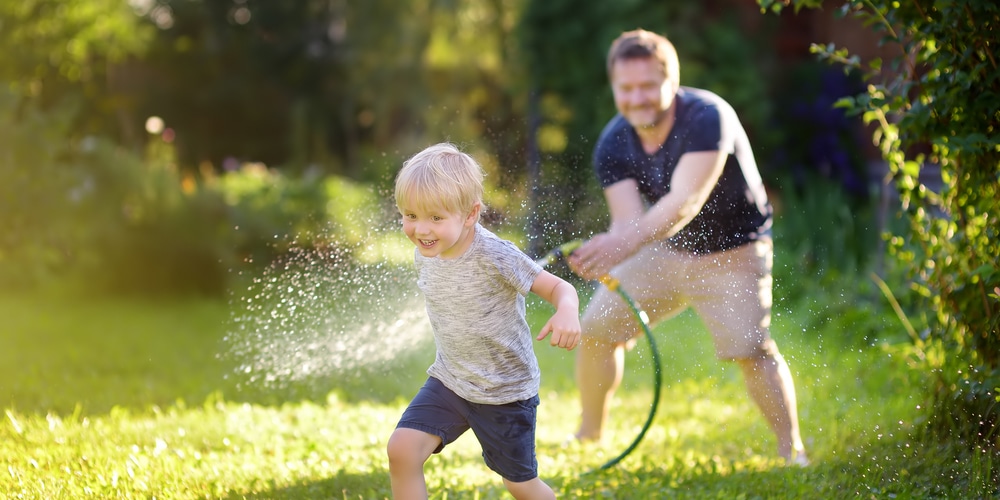Creating a garden where kids can safely explore, learn, and grow alongside plants requires thoughtful consideration.
This section outlines practical safety measures and educational benefits to turn your green space into a thriving, child-friendly environment.
Safety Measures in the Garden
- Awareness of Toxic Plants: Ensure that your garden is free of plants that are harmful if ingested or touched.
- Some common toxic plants to avoid include foxglove, oleander, and lily of the valley.
- Secure Garden Tools and Chemicals: Store garden tools and chemicals such as fertilizers and pesticides out of children’s reach.
- Consider using natural alternatives to minimize risk.
Educational Aspects of Gardening for Children
- Responsibility: Assign age-appropriate gardening tasks like watering or harvesting to teach children about responsibility.
- Science Education: Encourage learning through hands-on activities involving plant life cycles, photosynthesis, and the importance of pollinators.
Designing the Garden Layout
When crafting a garden that’s both beautiful and child-friendly, it’s essential to choose plants that are non-toxic and to carve out spaces that nurture a child’s sense of adventure and play.
Selecting Child-Safe Plants
- Audit existing plants: Before introducing new plants to your garden, evaluate any existing foliage for potential hazards.
- Some common garden plants can be toxic if ingested by young children.
- Research before buying: Always check that the plants you are considering are safe for children.
- Resources such as the ASPCA’s list of non-toxic plants act as a valuable guide.
- Prefer soft foliage: To minimize the risk of injury, opt for plants with soft leaves and stems and avoid those with thorns or spines.
Incorporating Play Areas
- Designate specific zones: Allocate specific areas for play within the garden layout, ensuring they are visible from the house for ease of supervision.
- Integrate natural elements: Encourage imaginative play through the use of natural elements.
- Tips on creating features like natural tipis can be particularly helpful.
- Ensure accessibility: Paths and walkways should accommodate small feet, with elements like stepping stones to add an element of fun and maintain the aesthetic coherence of your garden design.
What’s Going to Get Kids Excited to Be in the Garden
To transform your spring garden into a vibrant and engaging space for children, focus on incorporating interactive elements and providing kid-sized tools.
Interactive Garden Elements
- Sensory Plants: Select plants that stimulate the senses, like lamb’s ear with its soft foliage or fragrant herbs such as mint and basil, which provide a tactile and olfactory experience.
- Play Structures: Add a simple outdoor play kitchen or a sandbox, which encourages imaginative play while connecting little ones with nature’s textures.
Garden Tools for Kids
- Watering Cans: Opt for lightweight, colorful watering cans that fit comfortably in small hands, enabling kids to help with watering tasks.
- Gardening Sets: Provide child-friendly gardening sets that include spades, rakes, and gloves designed for smaller hands, making it easier for kids to dig in and contribute.
Engaging Children in Gardening
Introducing children to the world of gardening can spark their curiosity and instill a sense of responsibility. Through hands-on activities and guided responsibilities, you can transform your spring garden into a delightful learning environment for kids.
Fun Gardening Projects for Kids
- Create a Pizza Garden: Encourage your children to grow their own pizza toppings by planting tomatoes, bell peppers, onions, and herbs. They will be thrilled to watch their ingredients grow from seed to harvest.
- Fairy or Dinosaur Garden: Stimulate their imagination by dedicating a small section of the garden to create a magical fairy or prehistoric dinosaur landscape.
- Use miniature plants, small figurines, and creative accessories to bring their tiny spaces to life. These enchanting projects can be fun for gardening with kids.
- Colorful Flower Rainbow: Select flowers that bloom in an array of colors and plant them in the shape of a rainbow.
- This project can be both aesthetically pleasing and educational, as children learn about different species and colors of flowers.
Teaching Responsibility Through Gardening Tasks
- Weeding and Watering: Assign regular weeding and watering chores to teach kids the importance of garden maintenance.
- This hands-on experience can instill a sense of ownership and pride in their efforts.
- Plant Care Lessons: Use simple experiments such as testing the soil’s pH with vinegar or baking soda to introduce basic plant biology and care.
- The visible reactions will be engaging and informative about the soil conditions for their garden. Refer to creative educational activities like these for engaging experiences with gardening for children.
- Harvesting Rewards: Involve youngsters in the harvest process, ensuring they understand the dedication it takes to go from seed to table.
- Teach them proper techniques for picking fruits and vegetables, emphasizing the rewards of their hard work.
Maintaining a Kid-Friendly Garden
Creating a kid-friendly garden is a labor of love that goes beyond the planting phase. Regular maintenance ensures safety and provides a welcoming environment for young ones to learn and play.
Routine Safety Checks
- Inspect Play Equipment: Regularly examine swings, slides, and any other structures to ensure they’re secure and free of damage.
- Look for sharp edges, loose screws, or signs of wear and tear.
- Check Plant Health: Keep an eye out for toxic plants and promptly remove them.
- Also, watch out for plants with thorns or ones that attract bees, which could be a hazard.
Involving Kids in Garden Care
- Assign Age-Appropriate Tasks:
- Watering plants
- Picking ripe vegetables
- Deadheading flowers
- Set Up a Gardening Schedule: Assign days for specific tasks, making garden care a routine part of your child’s week.
- Provide Proper Tools: Smaller, lightweight tools make it easier for kids to handle gardening tasks without strain.
Frequently Asked Questions
When embarking on the creation of a kid-friendly spring garden, it’s important to consider plant choices, safety, sensory experiences, and educational opportunities. Tailoring these aspects creates a garden that delights and informs young minds.
What are some child-friendly plants that are easy to grow for a beginner’s garden?
- Sunflowers: They grow quickly and can reach impressive heights, making them a thrilling watch for children.
- Cherry Tomatoes: They are hardy and produce a tasty reward that children can pick and eat.
- Marigolds: With their bright colors, they are easy to plant and maintain, perfect for young gardeners.
- Carrots: Kids love to see what’s grown underground when it’s time to harvest.
- Strawberries: These are fun to grow and even more fun for children to pluck and enjoy.
How can I create safe play areas in the garden for children?
- Ensure that play areas have soft surfaces like mulch or grass to cushion falls.
- Choose non-toxic plants and avoid those with thorns or spikes to prevent scratches or irritation.
- Designate specific areas for play to keep children away from gardening tools and chemicals.
What materials are best for constructing a child-proof garden enclosure?
- Use treated wood for durability and to avoid splinters.
- Consider vinyl fencing for a low-maintenance option that is free from toxins and sharp edges.
- Mesh and wire are suitable for keeping certain animals out while still allowing visibility.
How do you incorporate educational elements into a kid-friendly garden?
- Install plant markers with names and interesting facts to teach children about the different species.
- Create a compost area to show how organic waste is recycled into valuable soil.
- Establish a weather station: Teach about temperature, rainfall, and wind direction.
What are the best tools and equipment for children to use in gardening?
-
- Look for tools that are lightweight and ergonomically designed for small hands, like child-sized shovels and rakes.
- Offer watering cans that are small and easy to handle to prevent frustration from handling heavier equipment.
- Provide protective gear like gloves and hats to keep young gardeners safe and comfortable.
Which garden features can help stimulate a child’s senses and promote learning?
-
- Add features like wind chimes and birdhouses to introduce sounds and wildlife observations into the garden.
- Plant a variety of textures and scents with herbs like mint and rosemary to engage the sense of touch and smell.
- Incorporate bright flowers and plants with different shapes to visually stimulate and differentiate learning sections.
Last update on 2025-04-04 / Affiliate links / Images from Amazon Product Advertising API





